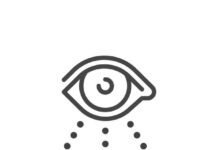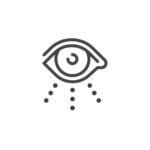Last Updated on March 9, 2025 by Bisma Sehar
Ranking a pest control website high on Google is crucial for reaching more customers. With search engines being a primary way for people to find services, it’s important to understand how to improve your site’s visibility. This guide offers clear, actionable steps to help you achieve this goal. Let’s take a closer look at how you can optimize your website to appear at the top of search results. By following this guide, you will learn strategies that have proven successful for companies like Nifty Pest. These strategies involve using the right keywords, improving your site’s content, and ensuring your site is user-friendly. You will also discover the benefits of local SEO, which can significantly enhance your reach within your service area. This step-by-step approach demystifies the process of search engine optimization, giving you the confidence to improve your website’s ranking on Google effectively.
Table of Contents
Understanding SEO Basics
Search Engine Optimization (SEO) is the practice of enhancing your website’s visibility on search engines. Google uses complex algorithms to determine which sites appear first. These algorithms consider factors like relevance, quality, and user experience. By understanding these basics, you can make informed decisions for your pest control website.
Incorporating Keywords Effectively
Keywords are the terms that potential customers type into search engines. Choosing the right keywords is essential. Consider using a mix of broad and specific terms. For instance, “pest control services” is broad, while “ant extermination in Boston” is more specific. Tools like Google’s Keyword Planner can help you find the best keywords for your services. Proper placement of these keywords on your website can improve your ranking.
Enhancing Content Quality
Content is king in the world of SEO. High-quality, informative content keeps visitors on your site longer. It also positions you as an authority in pest control. Consider writing blog posts, guides, and FAQs that address common pest problems. Ensure your content is easy to read and provides value to your customers.
Optimizing Website Structure
A well-structured website improves user experience. This, in turn, can boost your rankings on Google. Ensure your website is easy to navigate, with clear headings and a logical flow. Fast loading times and mobile-friendliness are also crucial. Google gives preference to sites that load quickly and work well on mobile devices.
The Role of Local SEO
For pest control services, local SEO is vital. Most customers search for services within their area. By optimizing your website for local search, you can attract more nearby clients. Include your location in your keywords and create a Google My Business profile. This helps your website show up in local search results and Google Maps.
Building Quality Backlinks
Backlinks are links from other websites to yours. They are important for SEO as they signal to Google that your site is credible. Focus on getting quality backlinks from reputable sources. You can achieve this by networking with local businesses or getting featured in industry publications.
Monitoring and Adapting Your Strategy
SEO is not a one-time task. It requires ongoing monitoring and adjustments. Use tools like Google Analytics to track your website’s performance. Analyze which strategies are working and which need improvement. Stay updated with Google’s algorithm changes to maintain your ranking.
Comparison: Local vs. General SEO
| Factor | Local SEO | General SEO |
| Keywords | Includes location (e.g., “Boston pest control”) | Broad terms (e.g., “pest control”) |
| Audience | Local clients | National or international clients |
| Tools | Google My Business | Standard SEO tools |
Conclusion
Improving your pest control website’s Google ranking is achievable with the right approach. By focusing on SEO basics, content quality, website structure, and local SEO, you can enhance your online presence. Remember to build quality backlinks and monitor your progress regularly. This ensures your efforts yield the desired results over time. For more guidance on SEO, consider exploring Google’s SEO Starter Guide or the NIST’s resources on cybersecurity basics to protect your website’s integrity as you grow online. These steps will help you maintain a competitive edge in the pest control industry.
















